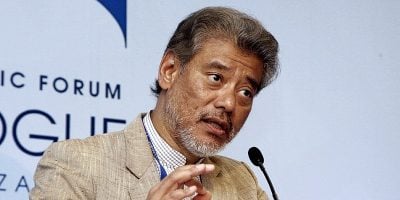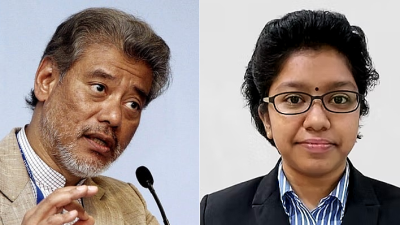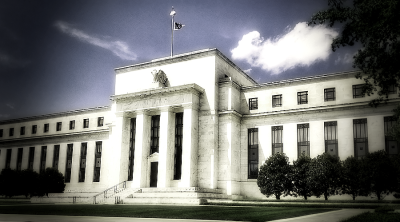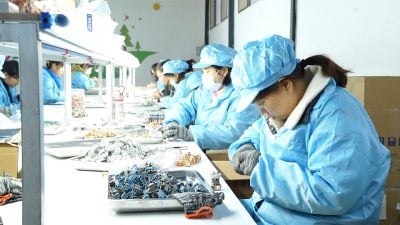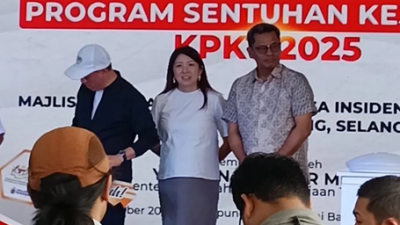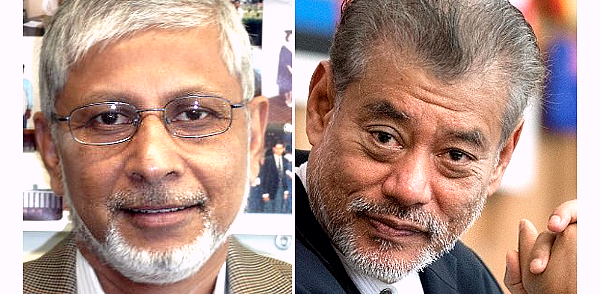
The bogey of inflation has been revived. Dubious pre-pandemic economic progress, fiscal constraints and vaccine apartheid were bad enough. Now, ostensibly anti-inflationary measures also threaten recovery and sustainable development.
The International Monetary Fund (IMF) has revised downwards its latest global growth forecast. Its latest World Economic Outlook (WEO) warns of a “dangerous divergence” between richer and poorer countries. This has been exacerbated by, but has also worsened national fiscal disparities and the ‘great vaccine divide’.
Inflation bogey revived
Meanwhile, there is growing talk of ‘stagflation’ – of rising inflation with slow growth and high unemployment, as in the 1970s. Meanwhile, The Economist warns of harmful “wage-price spirals” aggravating vicious circles of rising inflation and wage demands.
But over 70%, or 152 of 209 economists polled believe rising inflation worldwide is due to temporary supply chain disruptions. Heads of major central banks – such as the US Federal Reserve, Bank of England and European Central Bank – concur.
Although the IMF agrees, it also urges policymakers to “be on the lookout and be prepared to act, especially if…prolonged supply disruptions, rising commodity and housing prices, permanent and unfunded fiscal commitments, a de-anchoring of expectations, combined with mismeasurement of output gaps [materialize]”.
The IMF’s October 2021 Fiscal Monitor urges governments to take all steps necessary to regain capital markets’ and lenders’ confidence, including by reducing budget deficits. But it also warns against ‘self-defeating’, premature phasing-out of needed recovery measures. Thus, the ‘two-handed’ IMF economists offer contradictory policy guidance.
Wrong diagnosis
But inflation is unlikely to persist. First, labor market deregulation since the 1980s has long eroded workers’ bargaining power. Hence, workers are now more worried about job security, badly eroded in recent decades.
Second, ‘decent’ job creation remains weak in most rich countries after decades of ‘off-shoring’ and labor-saving innovation. Unsurprisingly then, labor shares of national income have been falling since the mid-1970s.
While jobs typically trail recovery, the current lag is “more severe” than before, notes the IMF. Across the world, labor force participation and employment remain well below pre-pandemic levels, particularly for youth.
The WEO notes private investment fell in 2021’s second quarter, with several new uncertainties responsible. Slower investment and growth also mean less tax revenue and higher debt-GDP ratios. Cutting spending will only make things worse.
Correct diagnosis should be the basis for choice of medication. Contrary to monetarist faith, inflation is not only due to excess money supply. But if supplies are blocked – e.g., due to disasters, conflicts, curfews or transport restrictions – demand easily becomes ‘excessive’.
Inflation is often also due to big suppliers abusing their market power, with powerful firms raising prices with higher ‘mark-ups’. Privatization and deregulation over the last four decades have strengthened these monopolies or oligopolies.
Blunt instrument
The WEO seems more concerned with inflation than employment as financial markets demand monetary tightening, interest rate hikes and fiscal austerity. Bloomberg has urged emerging economies to “brace for rate hikes”, with Mexico, Brazil, Peru, Russia and others obliging, as The Economist anticipated.
The interest rate is a blunt tool. Inflation is reduced by raising interest rates, cutting growth and increasing unemployment – “tough medicine” indeed. Hawks emphasize how inflation erodes the poor’s purchasing power, but deny their prescriptions do worse.
One must also wonder how interest rate hikes are supposed to address actual problems. For example, in September 2021, global food prices shot up nearly 33% year-on-year, due to extreme weather and pandemic restrictions. Higher rates also certainly could not help when a severe drought hit hydroelectric power generation in Brazil.
Higher interest rates squeeze both private and government spending. Thus, rate hikes will likely trigger a vicious circle of further rate increases and general austerity, slowing recovery and raising debt-GDP ratios.
Raising interest rates in rich countries will also see more capital flight from developing countries and exchange rate depreciations. Already handicapped by vaccine inequity and constrained fiscal space, worsened by modest debt relief and pandemic support from rich countries, raising interest rates will set them further back.
Debt misconstrued
Rising debt levels have understandably been an on-going concern. In 2019, the World Bank warned that post-2008 global financial crisis (GFC) indebtedness was dangerous, noting all previous debt waves had ended in crises.
With the pandemic, fears have been “looming” again of “catastrophic” debt crises in developing countries. As if governments had much choice, the Wall Street Journal warned, “Governments world-wide gorge on record debt, testing new limits”.
The IMF’s October Fiscal Monitor acknowledges, “there is no magic number for the debt target. Macroeconomic theory does not prescribe a specific debt target; nor is there a clear threshold above which debt might become particularly harmful to economic growth”. This confirms earlier IMF and World Bank findings suggesting exaggeration of debt constraints.
Rather, the focus should be on “the likely growth effects of the level, composition and efficiency of public spending and taxation”. Instead of fixating on overall debt levels, its composition – domestic vs external, public vs publicly guaranteed – deserves more attention.
In fact, debt-financed infrastructure, education, skill development and retraining programs all enhance growth. IMF research found such infrastructure investment had large growth effects without even raising the debt-GDP ratio.
Deep-seated challenges
The predictable recommendation is ‘belt-tightening’ – via ‘austerity’ and ‘higher interest rates’ – bringing even more economic contraction. Typical structural reform prescriptions – e.g., more labor market liberalization, deregulation, privatization and tax cuts – only make things worse, while regressive tax cuts rarely generate promised growth.
Financialization in recent decades has encouraged more speculation, share buybacks, real property, mergers and acquisitions. Consequently, the real economy has suffered, with inflation rising as productivity growth falters.
But inflation was kept in check by cheap imports and cheaper labor, even as profit margins and executive salaries rose. But neoliberals have not hesitated to claim credit for taming inflation during the Great Moderation via fiscal austerity, debt ceilings and inflation targeting.
Despite fiscal austerity, debt has risen, especially since the GFC. Slower growth has also meant less revenue, further reducing fiscal space. Public investment cuts – particularly for services, infrastructure, research and development – have also hurt productivity growth.
Build forward, not backwards
Every economic crisis is different in its own way. The COVID-19 recession involves both supply and demand shocks. Output has fallen due to lockdowns and value chain disruptions. Demand has also declined with lower incomes, less spending, more jobs lost and greater uncertainty.
When provided, relief measures have sustained some demand. Pandemic restrictions have accelerated digitalization, but other changes are also needed. Reforms must build on COVID-19 transformations for a better future, e.g., by promoting job-intensive green investments, worker reskilling and retraining.
The COVID recession thus offers an unexpected opportunity to ‘build forward better’ to address deep-seated problems to build a better world. This must necessarily involve shedding biased and dysfunctional arrangements, managing markets, guiding private investments, workforce retraining and investing in education, health and social protection.
This article was originally published on KSJomo.org.
Related IPS articles:
- Fight Pandemic, Not Windmills of the Mind
- Central Banks Must Address Pandemic Challenges
- Boldly Finance Recovery to Build Forward Better
- Pandemic Relief Policies Need More Resources, Better Design
(Anis Chowdhury is Adjunct Professor, Western Sydney University and University of New South Wales, Australia. Jomo Kwame Sundaram was an economics professor and United Nations Assistant Secretary-General for Economic Development.)
ADVERTISEMENT
ADVERTISEMENT







